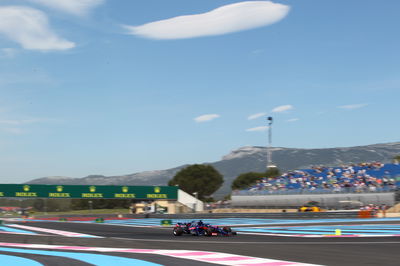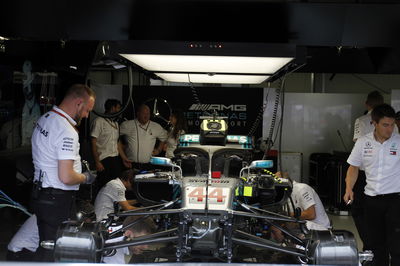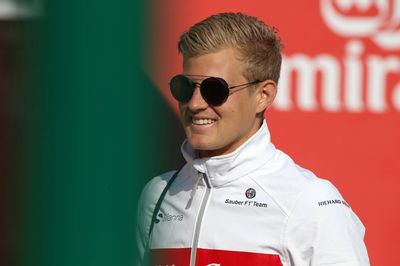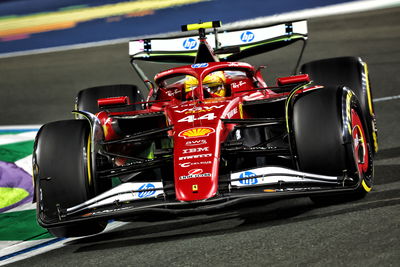Is F1’s first triple-header a sign of things to come?
Formula 1 enters uncharted territory this weekend as it begins the first leg of its maiden triple-header, with the French Grand Prix kicking off a run of three races in as many weekends, and five in the next six weeks.
F1’s schedule has grown increasingly trying over the past decade or two, expanding from around 16 or 17 races from March until October to a steady 21 that edges a little further in both directions on the calendar, pushing teams and drivers to their limits.

Formula 1 enters uncharted territory this weekend as it begins the first leg of its maiden triple-header, with the French Grand Prix kicking off a run of three races in as many weekends, and five in the next six weeks.
F1’s schedule has grown increasingly trying over the past decade or two, expanding from around 16 or 17 races from March until October to a steady 21 that edges a little further in both directions on the calendar, pushing teams and drivers to their limits.
Back-to-back races have been common in F1 for some time, but never has a third one been bolted on. The idea was initially proposed with the ill-fated Grand Prix of America in New Jersey, which was provisionally slotted between Monaco and Canada on the 2014 calendar before disappearing from the final schedule. But with a deal being struck for F1 to return to France in 2018 after 10 years away, and in a bid to avoid the World Cup final weekend, a triple-header could not be avoided.
Logistically, it has caused a headache for teams as they cart themselves around Europe, going from France to Austria, and then on to Silverstone. One team has already confirmed it will not be bringing its usual motorhome to Austria due to the pressures involved, while the stresses it places on all of the team members involved cannot be understated. Between brutal working days and travelling, there’s next to no time to recover and recuperate.
“I am fully conscious of how difficult it is for these five races now and how important they are, because you go then into the summer break and your mind is set for when you come out,” Haas team boss Günther Steiner said.
“If you go in on a high, you normally get out a lot more relaxed than when you go in a low and you keep on thinking and thinking. It’s very important. It will be a tough stretch for everybody, everybody working in this industry.”
Force India’s Sergio Perez explained that while he has to alter his approach slightly to deal with three races in a row, it had a much tougher impact on the team members.
“You definitely have to organise yourself a lot better. Normally when you have a back-to-back, with all the commitments, sponsors, etc, it’s important that you are fresh to all of them,” Perez said.
“It’s not the triple-header. It’s more than that, with five races in six weeks. It’s important more than anything that you try to organise yourself in the best way you can, but also the boys. It will be important to keep them as fresh as possible because it’s a massive one for them.
“The work these guys do, the mechanics, catering, etc, it’s tremendous. It’s a bit too much on that side. But then everyone will be helping each other, and hopefully we’ll get on well.”
But as F1’s commercial rights holder continues to look at adding new events to the calendar in a bid to aid the sport’s global expansion, there is a chance that triple-headers could become the norm. The plan for next year is to start one week earlier and end one week later, allowing for greater flexibility through the middle of the season - but with the likes of Miami, Vietnam and Copenhagen all queuing up to join, it may not ease the congestion a great amount.

“I think you have to look at the human logistics in a lot of this,” Force India deputy boss Bob Fernley said. “At 20 races, we’re very much on the edge of being able to maintain it with one crew, one travelling crew in particular.
“Occasionally we can go to 21 and then we go back to 19 and we can cope with all of that, but once you get a sustained amount of races that are going well up into the twenties, we’re going to have to bring in revolving crews and there’s a huge cost to that.
“These are the things we’ve got to look at so there needs to be just a look at how are we going to do it logistically. It’s quite capable from a show point of view, but it will change how we, as teams, operate in my opinion.”
Adding more races to the calendar is no sure-fire way of increasing interest, reckoned Steiner, who thinks there could in fact be a saturation by giving fans too much F1 which could have a negative effect in the long run.
“I am actually interested to see how the viewership goes after three consecutive races all the data which comes out of it,” Steiner said.
“How will the people which work here react to it? ‘This was just too much, I am not going to do this’? Even if it’s something negative we can deal with that, but maybe it’s a great thing and maybe everybody enjoys it and we’ve got millions of people watching.
“You don’t want it all the time, because then it’s getting dull. I am not sure. I want to see it before I speak, but it will be an interesting period.”
They say that necessity is the mother of invention, and while that may be true of the triple-header, it will be fascinating to see just how teams cope with it, what the reaction from the wider F1 world is like, and whether it is managed well enough to make the sport’s bosses consider whether it’s a strategy that could be employed more down the line.











